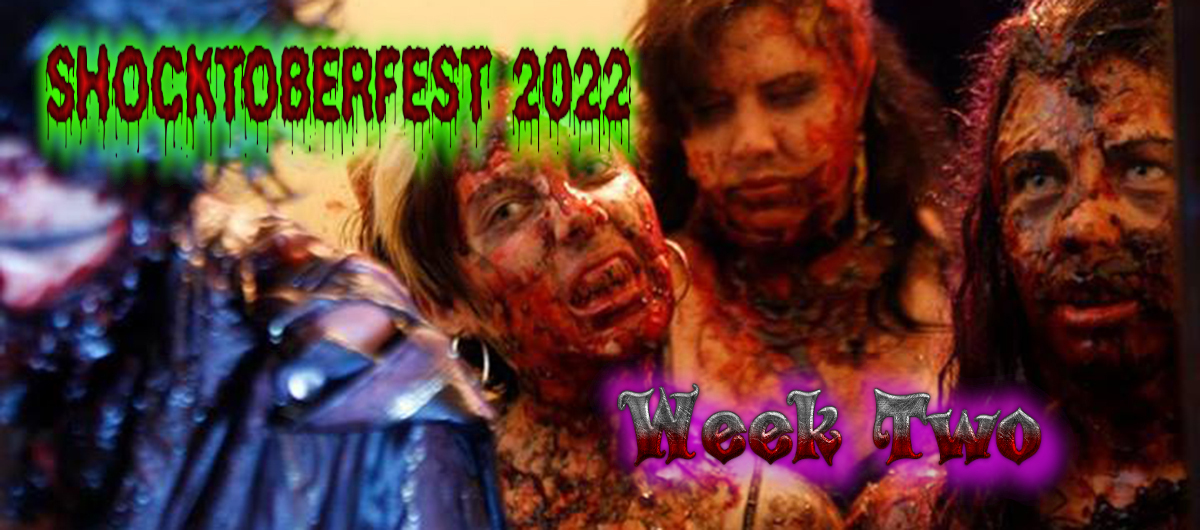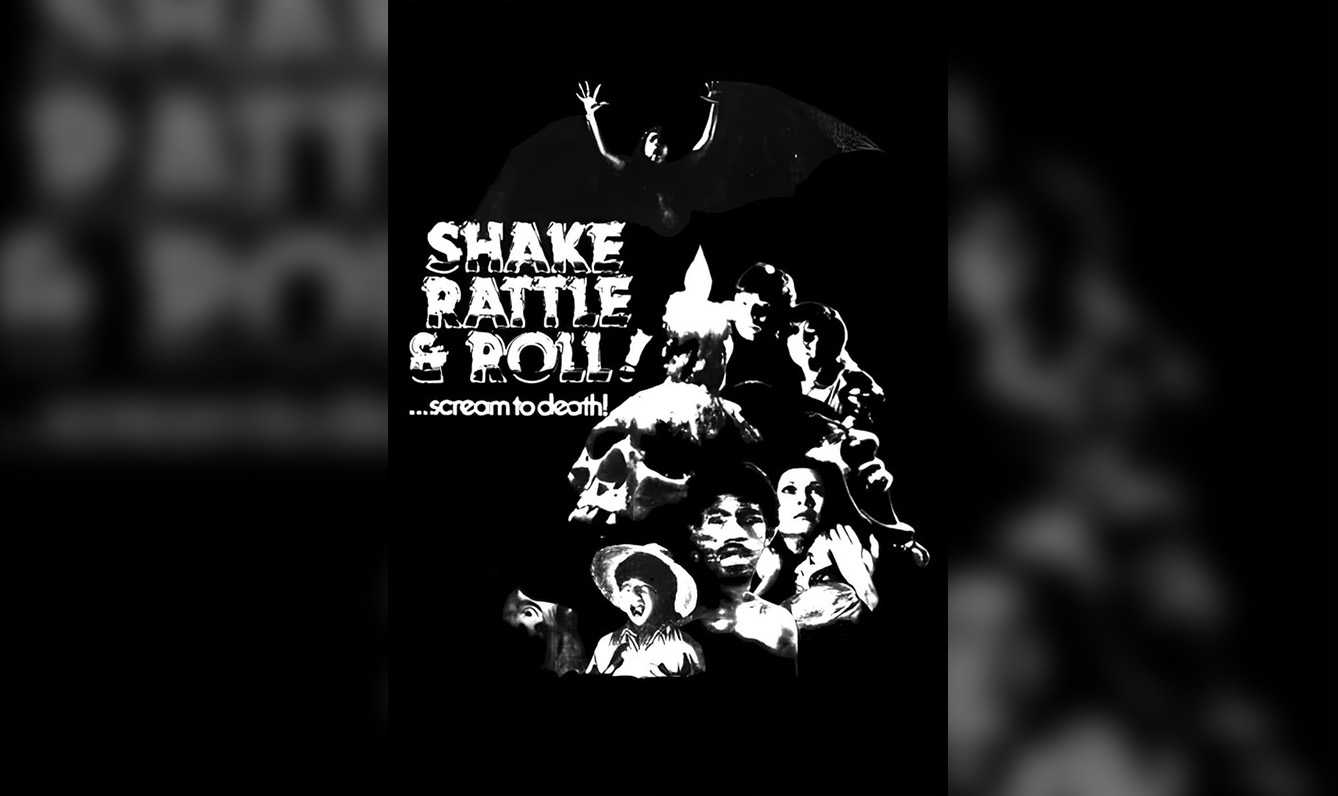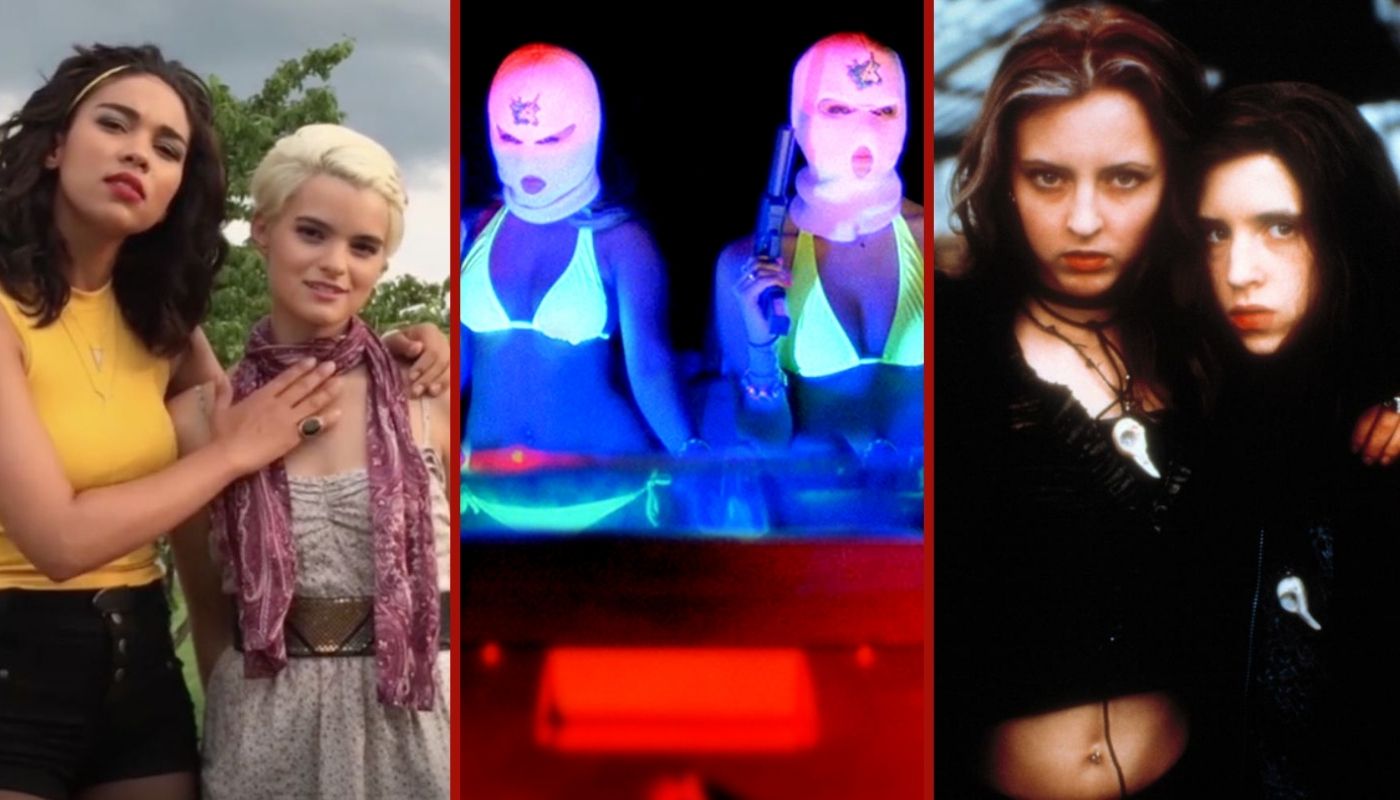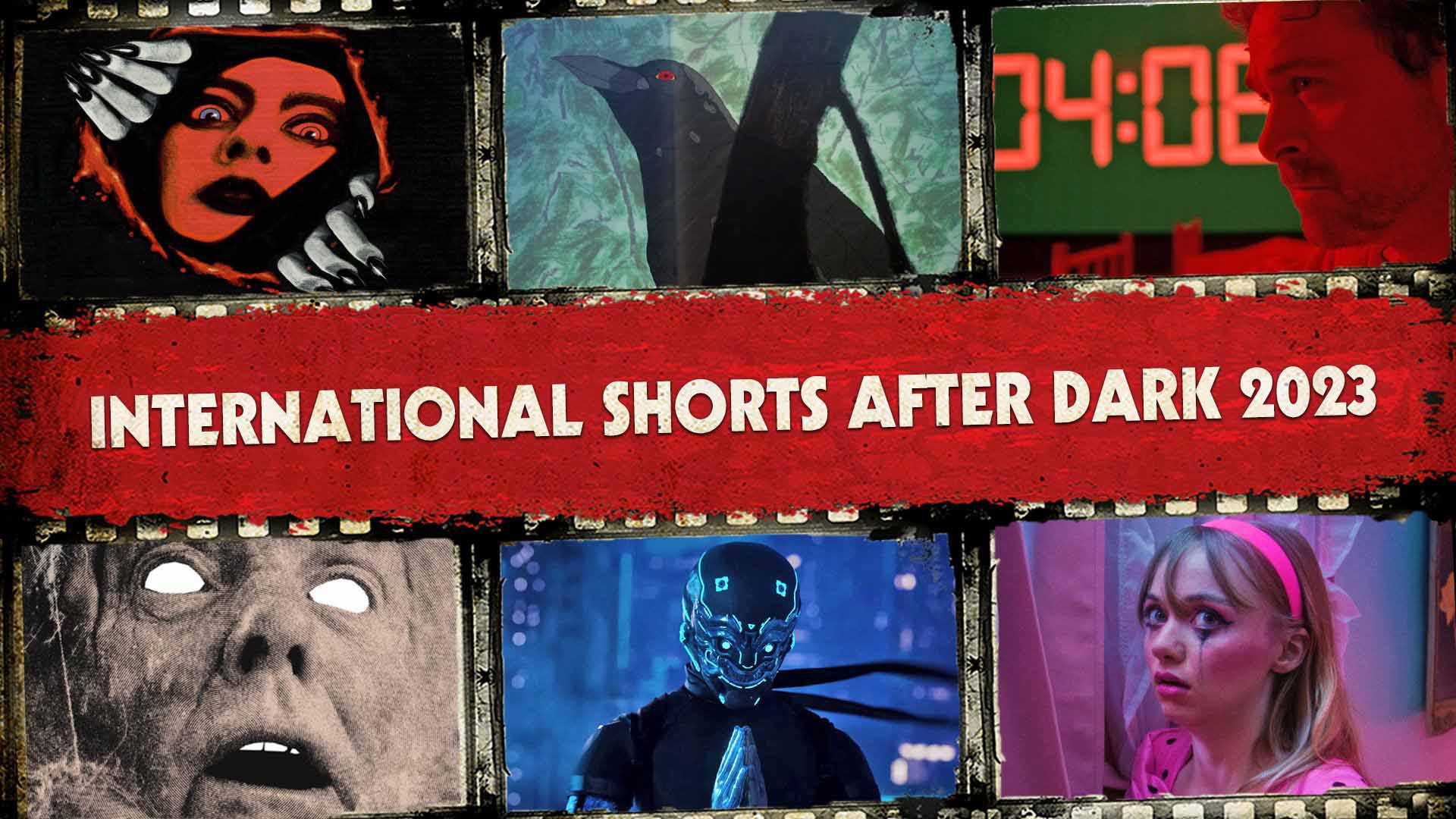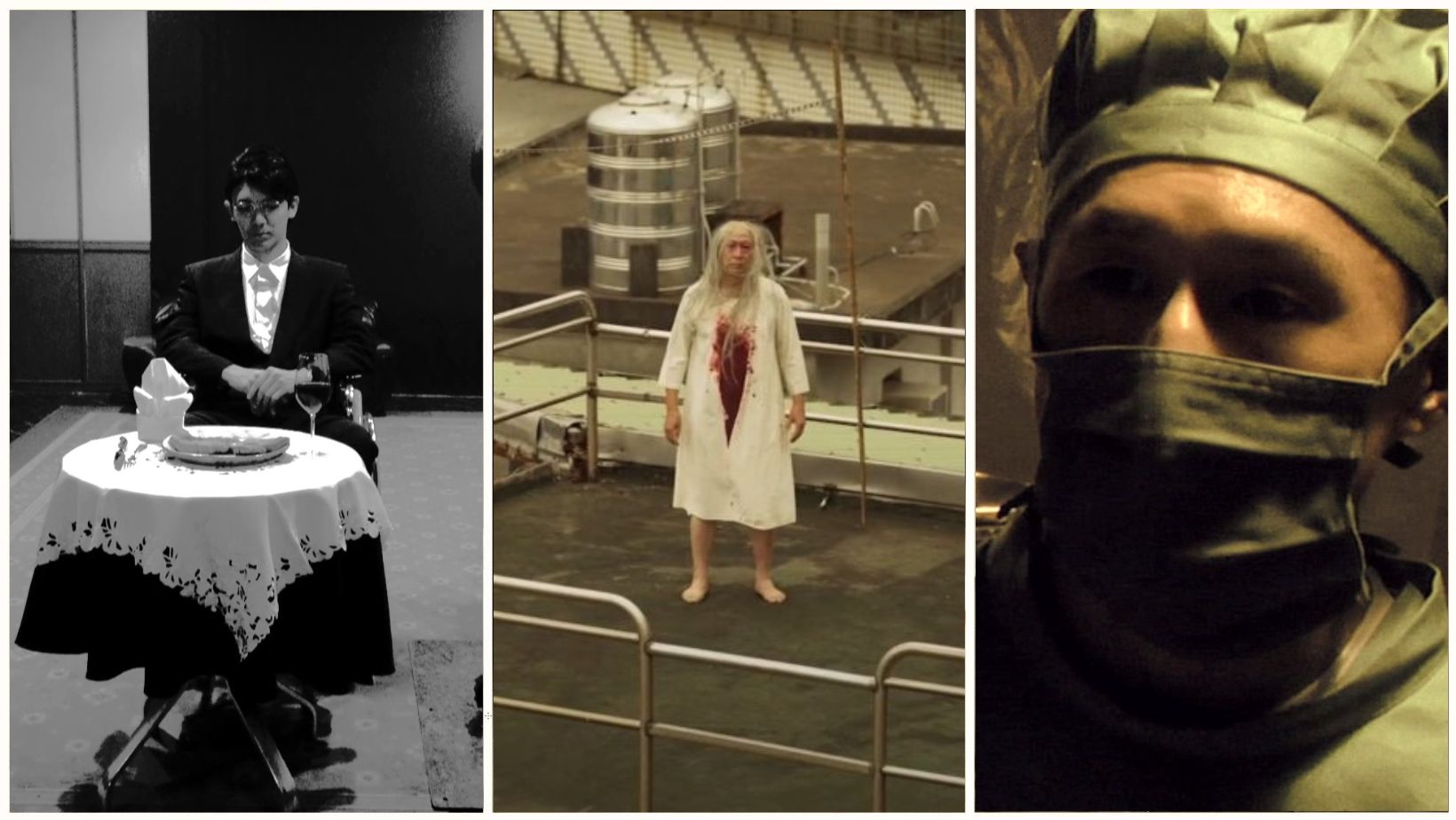
While Hollywood has produced its fair share of disturbing films, Asian cinema takes psychological horror, extreme violence, and unsettling storytelling to another level. From nightmarish imagery to soul-crushing narratives, these films push the boundaries of fear and discomfort in ways few others dare to attempt. We have a list of 10 deeply disturbing titles for you to get your teeth into.
-
- Tumbling Doll of Flesh (1998)
- Man Behind the Sun (1988)
- Kfc (2016)
- The Ebola Syndrome (1996)
- The Sadness (2021)
- Orozco the Embalmer (2001)
- Guinea Pig: Flower of Flesh and Blood (1985)
- Mai-chan’s Daily Life (2014)
- Grotesque (2009)
- Concrete-Encased High School Girl Murder Case: Broken Seventeen-Year-Olds (1995)
Tumbling Doll of Flesh (1998)
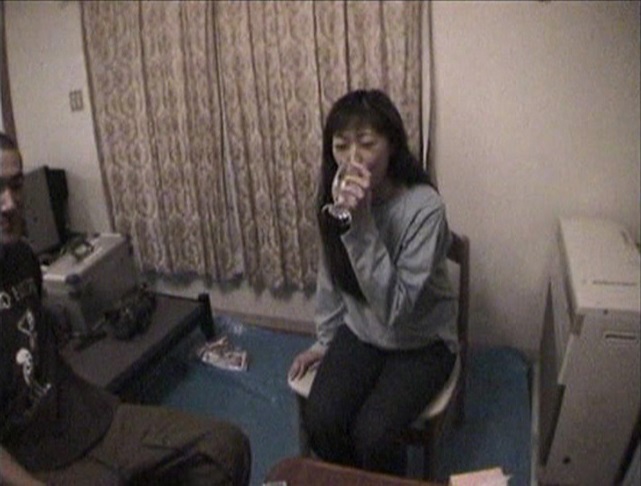
Tumbling Doll of Flesh (Niku Daruma) is a 1998 Japanese Adult splatter horror written and directed by Tamakichi Anaru. Kana tries to end her starring role in an abusive porno. For her, the end comes only after she’s been reduced to a “Tumbling Doll of Flesh”.
Featuring minimal characterisation, Tumbling Doll of Flesh throws its audience into the thick of it with its raw visual style–blurring the line between fiction and reality expertly. The unflinching depiction of extreme violence, combined with the film’s unsimulated adult material, eerie lack of a traditional horror score, or narrative structure, serve to make the film feel unnervingly real throughout.
The perpetual nihilism of the film—where suffering is prolonged, meaningless, and without redemption—leaves a lasting psychological impact. It lacks the over-the-top aesthetic of many exploitation films, instead opting for a suffocatingly realistic portrayal of human cruelty. This, combined with the lo-fi, handheld camerawork, makes Tumbling Doll of Flesh an endurance test even for the most seasoned extreme cinema viewers.
Man Behind the Sun (1988)
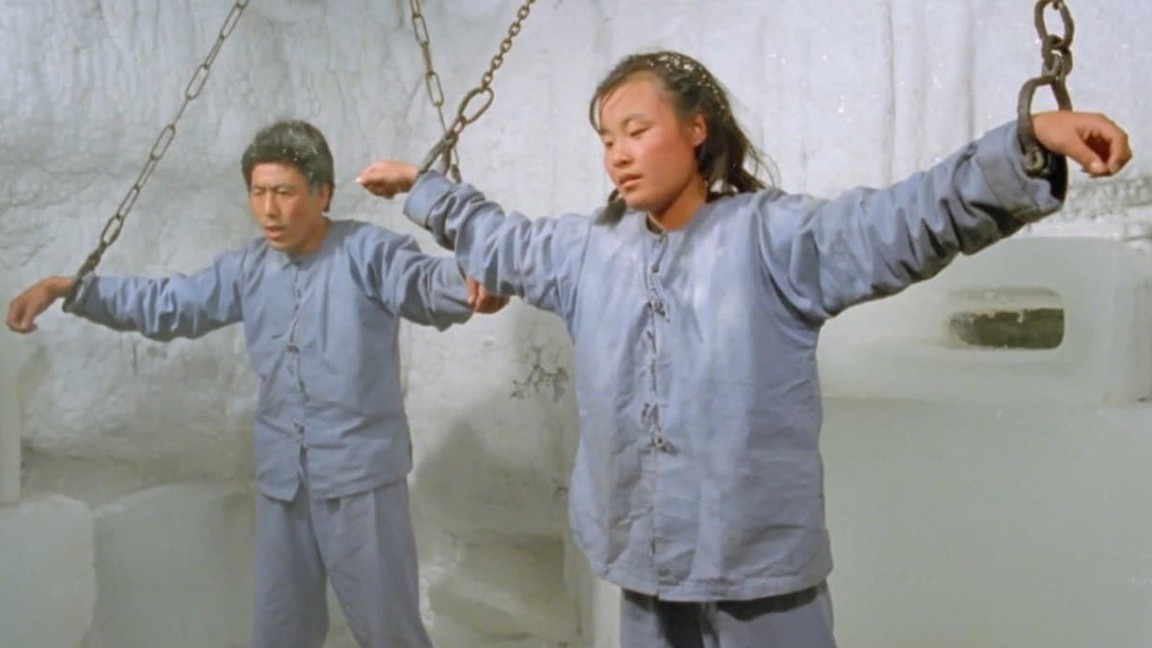
Man Behind the Sun (Hei tai yang 731) is a Hong Kong CAT III exploitation horror written by Mei Liu, Wen Yuan Mou, and Dun Jing Teng, and directed by Tun-Fei Mou. Japanese troops round up Chinese and Russian prisoners of war and take them to unit 731, where they’re horribly tortured and experimented on to test new biological weapons.
Unlike conventional horror films, the disturbing power of Man Behind the Sun lies in its historical basis—many of the brutal experiments shown in the film were real, making the violence feel far more unsettling.
The graphic depictions of human experimentation—including live dissections, frostbite tests, and pressure chamber deaths—are rendered with unflinching realism. Additionally, the use of real cadavers and animal cruelty only heightens the film’s shock factor, blurring the line between historical dramatization and exploitation to deliver an astoundingly clinical depiction of these horrific acts.
Kfc (2016)
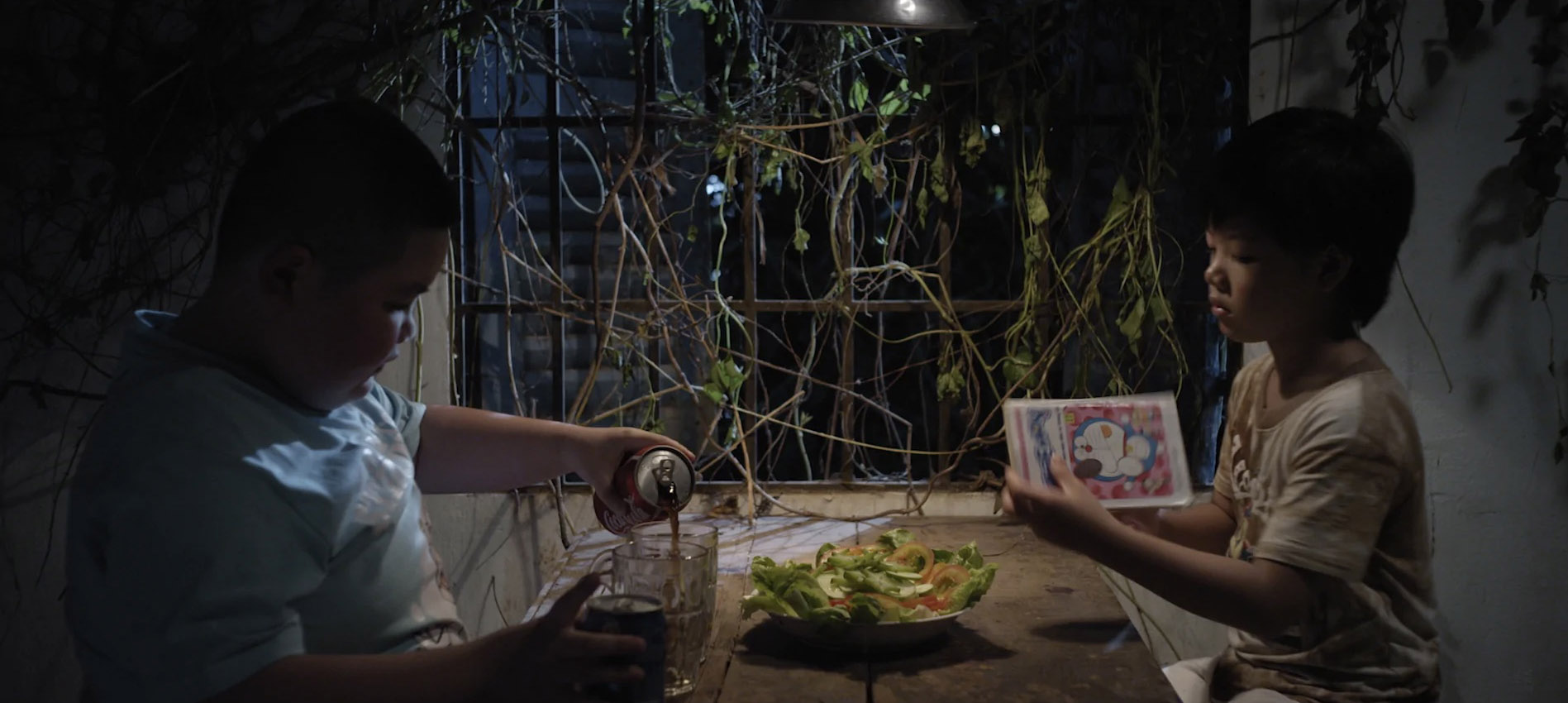
Kfc is a 2016 Vietnamese splatter horror written and directed by Le Binh Giang. A cannibalistic doctor and his accomplice operate a torture chamber in Hanoi, cutting up victims. His son befriends the children of one victim, continuing the cycle of violence.
Faced with almost insurmountable odds during its creation, Filmmaker Le Binh Giang encountered numerous difficulties while making Kfc due to its graphic nature. Turned down by producers not wanting to take the risk of producing the film, and being refused graduation when turning a portion of the script into a short film for his final project in film school, the film had essentially become considered banned in its home country of Vietnam (but not really).
An onslaught of grotesque imagery and nihilistic horror, the film pushes the boundaries of extreme cinema. The film presents a surreal, nightmarish vision of violence, cannibalism, and depravity, rejecting conventional storytelling in favor of a chaotic, fever-dream-like experience. Its violence is portrayed as random, senseless, and often darkly comedic, stripping the audience of any comfort or justification. The film’s grotesque, almost cartoonish excess is deeply unsettling, mixing body horror, gore, and perverse humor absurdly and horrifyingly.
Adding to its disturbing nature is its lo-fi, unpolished aesthetic, which enhances its raw, underground feel. There is no real plot or character development—just a relentless, disorienting barrage of extreme imagery that leaves the viewer feeling dirty and disoriented. KFC isn’t just disturbing because of its violence, but because of its overwhelming cynicism, making it a truly transgressive piece of extreme cinema.
Ebola Syndrome (1996)
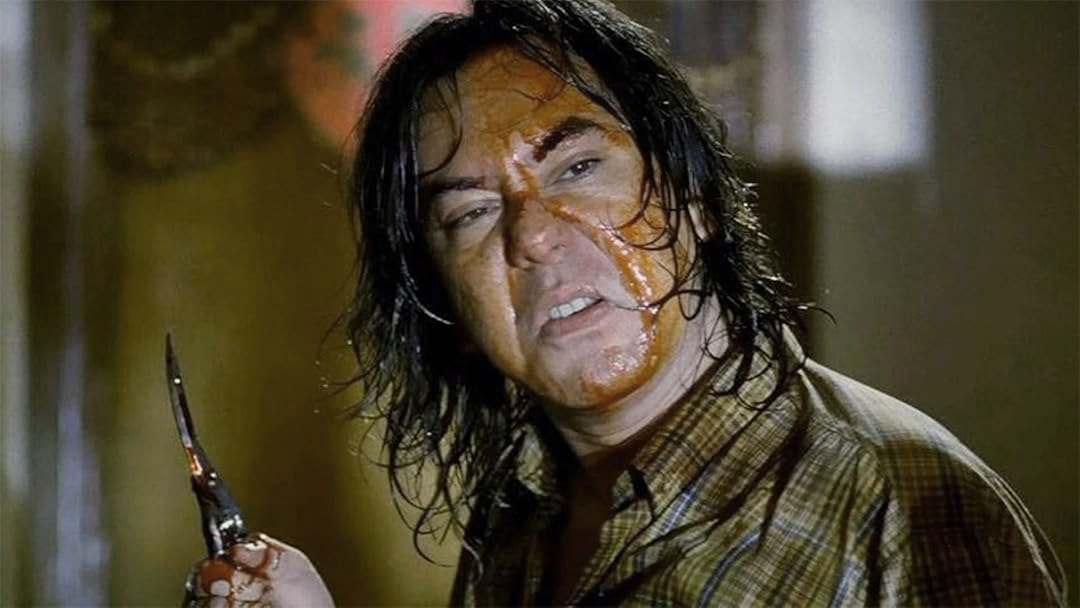
Ebola Syndrome (Yi boh lai beng duk) is a 1996 Hong Kong CAT III exploitation film written by Ting Chau, and directed by Herman Yau. A Chinese restaurant worker wanted for murder in Hong Kong contracts Ebola in South Africa, becomes immune to it, and unknowingly spreads the virus there, before coming back to Hong Kong and continuing to infect people with the virus.
A shockingly depraved blend of exploitation, grotesque body horror, and pitch-black comedy, Ebola Syndrome is a non-stop rollercoaster of hilarious highs and disturbing lows. The film’s approach to its visceral, over-the-top gore, graphic sexual violence, cannibalism, and disease-driven horror is presented with an unsettling mix of sleaziness and absurdity, creating a uniquely nauseating atmosphere. Anthony Wong’s unhinged performance as the vile, remorseless murderer/rapist makes every scene feel repulsively unpredictable.
Few films manage to be as simultaneously disgusting and darkly entertaining as Ebola Syndrome, cementing its status as one of Hong Kong’s most notorious and disturbing exploitation films ever made. However, Anthony Wong running down a crowded street engulfed in flames screaming “EEEEBOOOOLAAAAAA” will never not be funny.
The Sadness
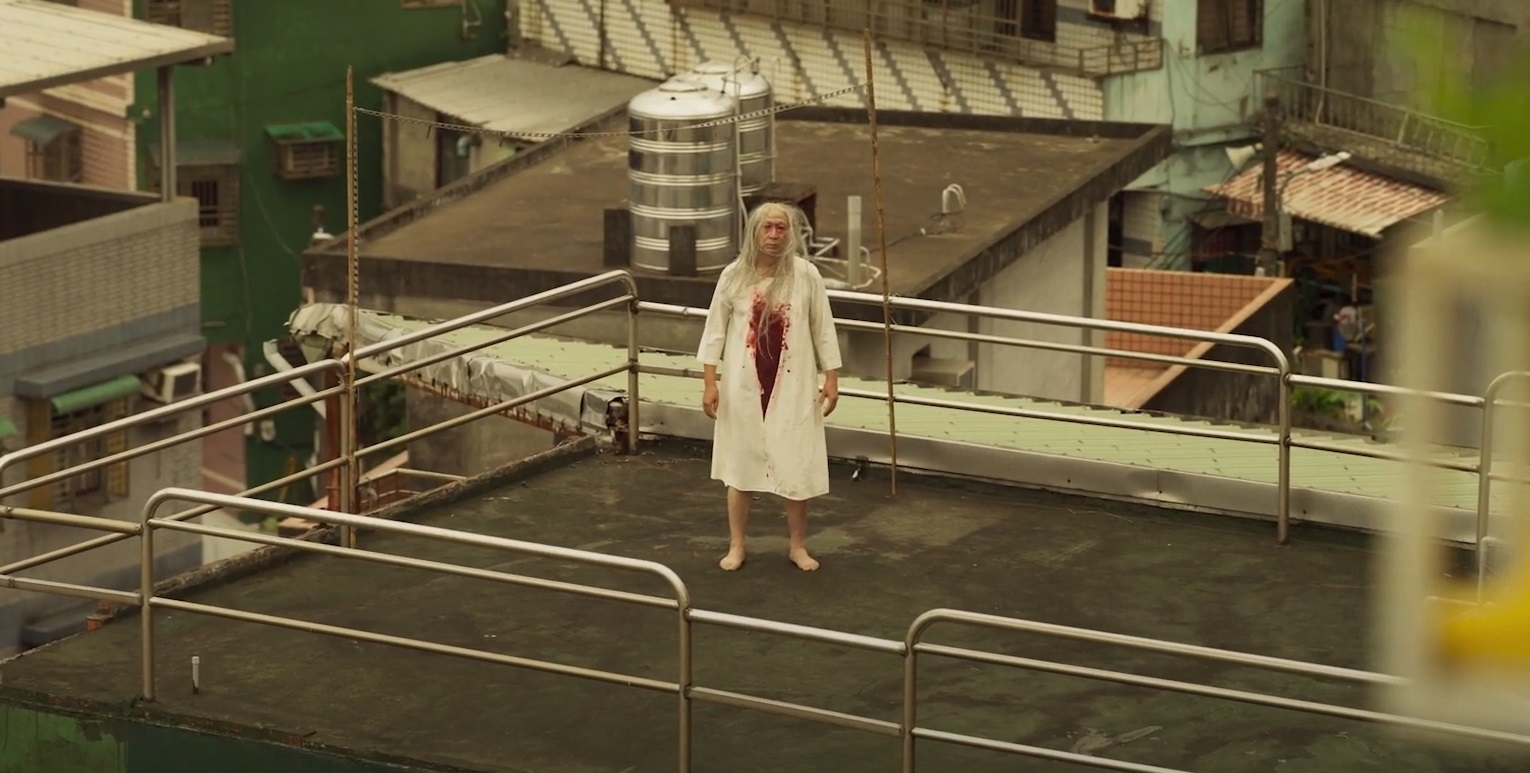
The Sadness (Ku bei) is a 2021 Taiwanese splatter epidemic horror written and directed by Rob Jabazz. A young couple is pushed to the limits of sanity as they attempt to reunite amid the chaos of a pandemic outbreak. The streets erupt into violence and depravity, as those infected are driven to enact the most cruel and ghastly things imaginable.
What makes The Sadness so disturbing is its sheer, unflinching intensity–the audience being assaulted with a non-stop whirlwind of adrenaline-fueled violence and debauchery from start to finish. Unlike typical zombie films, where the infected mindlessly attack, these victims become sadistic, intelligent predators who revel in the most depraved acts imaginable. The film doesn’t just focus on physical brutality—it delves into psychological and sexual horror, making it deeply unsettling on multiple levels.
The violence is shot with an almost disturbingly slick style, making the carnage feel both horrifyingly realistic and nightmarishly over-the-top. Furthermore, the film lacks hope or redemption like the majority of the genre. Instead, a descent into chaos and suffering is all that is in store for the viewer, with little optimism about life returning to normality after the events of the film.
Orozco the Embalmer (2001)
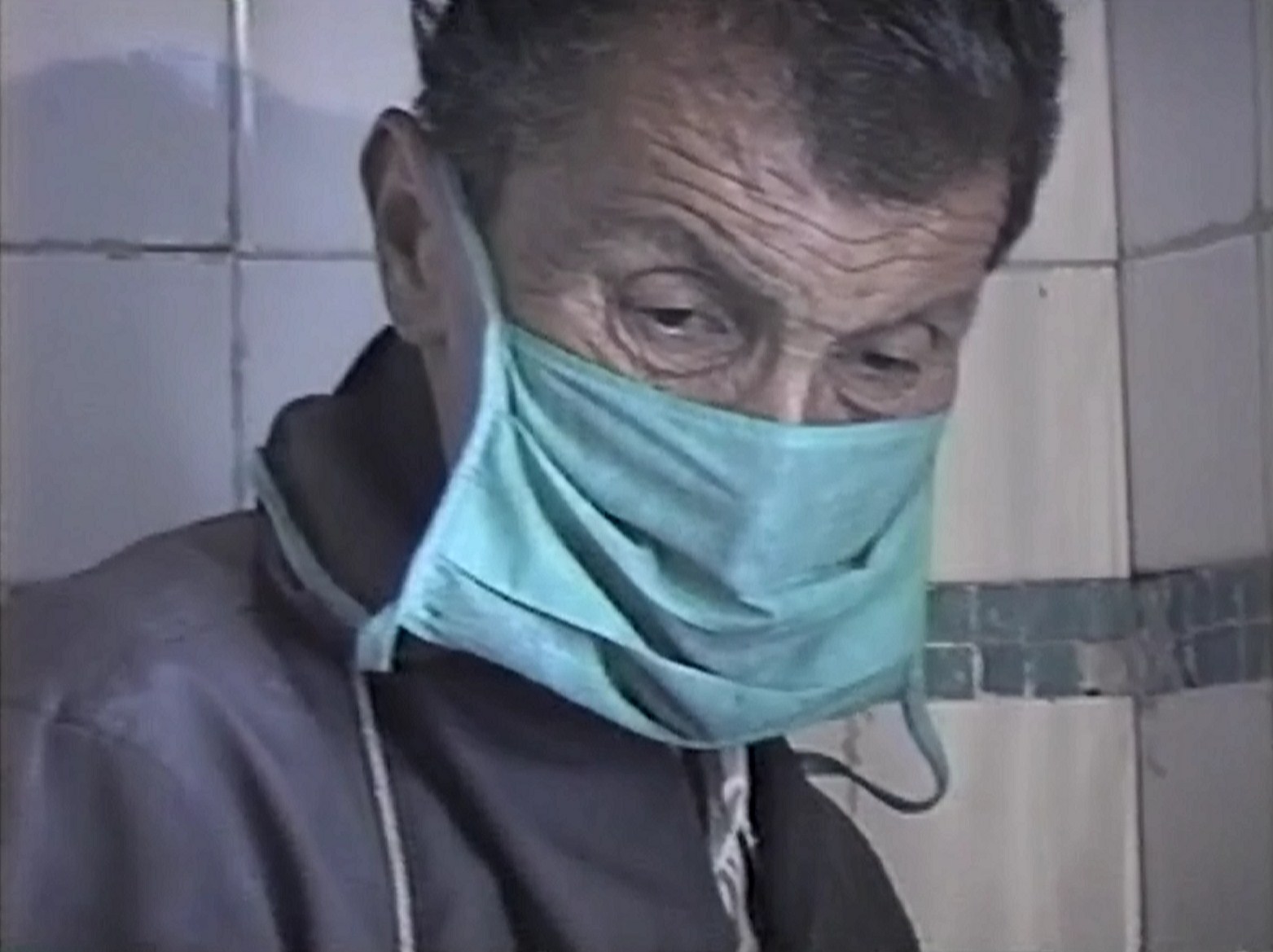
Orozco the Embalmer (Orozco el embalsamador) is a 2001 Japanese/Columbian documentary written and directed by Kiyotaka Tsurisaki. In 1996, Kiyotaka Tsurisaki, one of Japan’s most infamous death photographers, ventured into the center of Hell itself – the Rue Morgue neighborhood of Bogota, Colombia. With death and murder rampant, the corpses eventually find their way to embalmer Froilan Orozco, who has been tending the dead for over 50 years. We watch as bodies are brought into his shop and he prepares them for their funerals.
Offering a raw and unfiltered look into the life of an embalmer working in the slums of Colombia, Orozco the Embalmer doesn’t shy away from its depiction of the ugliness of death. Unlike fictional horror films, its power to disturb comes from its stark realism—there are no special effects, no narrative embellishments, just the cold, unflinching documentation of death in its most graphic and unceremonious forms.
What makes Orozco the Embalmer so disturbing is its detached presentation of death as routine. The film shows decomposing bodies, mutilated corpses, and the embalming process in excruciating detail, with Orozco himself performing his work with an eerie, almost emotionless efficiency. There is no attempt to sensationalize or moralize—just a grim, fly-on-the-wall depiction of death as an everyday reality.
Guinea Pig: Flower of Flesh and Blood (1985)
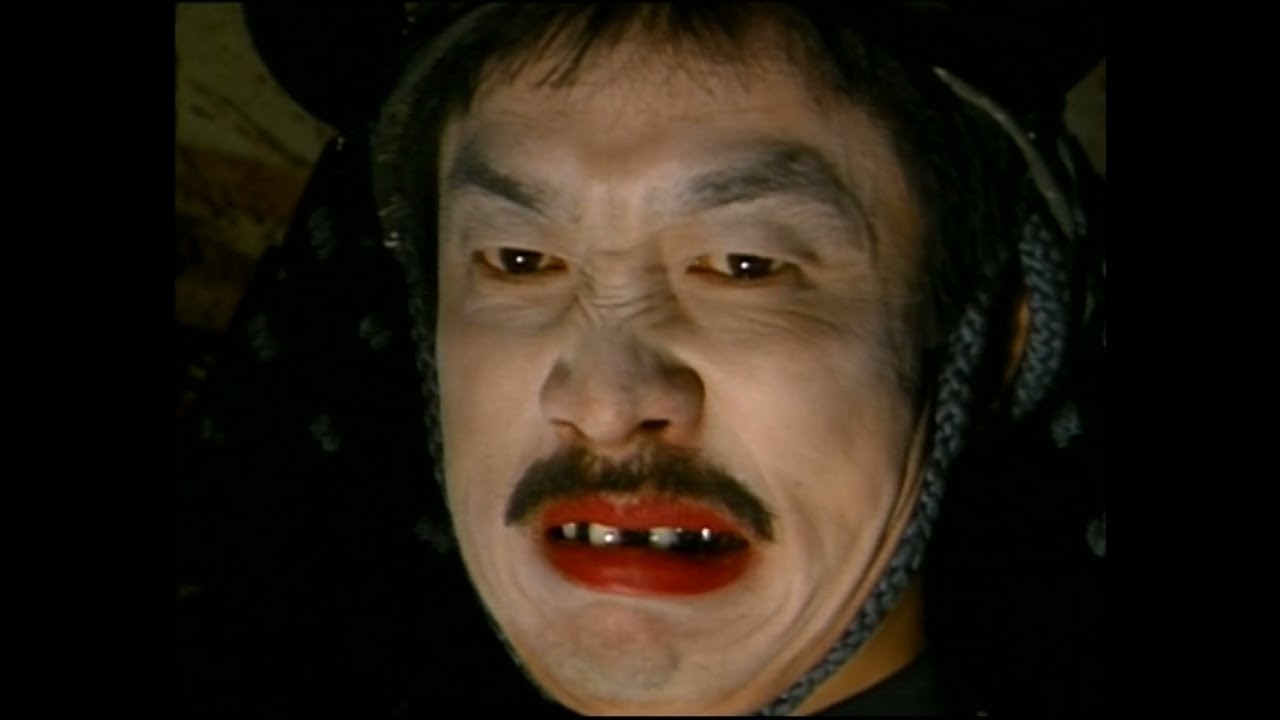
Guinea Pig: Flower of Flesh and Blood (Ginî piggu 2: Chiniku no hana) is a Japanese 1985 splatter horror written and directed by famed horror mangaka Hideshi Hino. Late at night, a woman is kidnapped by an unknown assailant and taken back to his blood-spattered dungeon, where he turns her into a “flower of blood and flesh” through a series of dismemberment and evisceration.
What makes Flower of Flesh and Blood so disturbing is its sheer commitment to realism. The film’s lack of traditional narrative, character development, or any form of emotional relief is presented purely as an exercise in simulated suffering. The grainy, lo-fi cinematography, combined with eerily authentic practical effects, makes it feel unnervingly real, so much so that it infamously caught the attention of the FBI, who investigated it as an actual snuff film after receiving a tip from a drugged-up Charlie Sheen.
The film’s slow, detached presentation of brutality, paired with the surreal, poetic musings of the killer, creates an atmosphere of nightmarish unease. There’s no catharsis, no moral lesson—just pure, methodical human destruction.
Mai-chan’s Daily Life (2014)
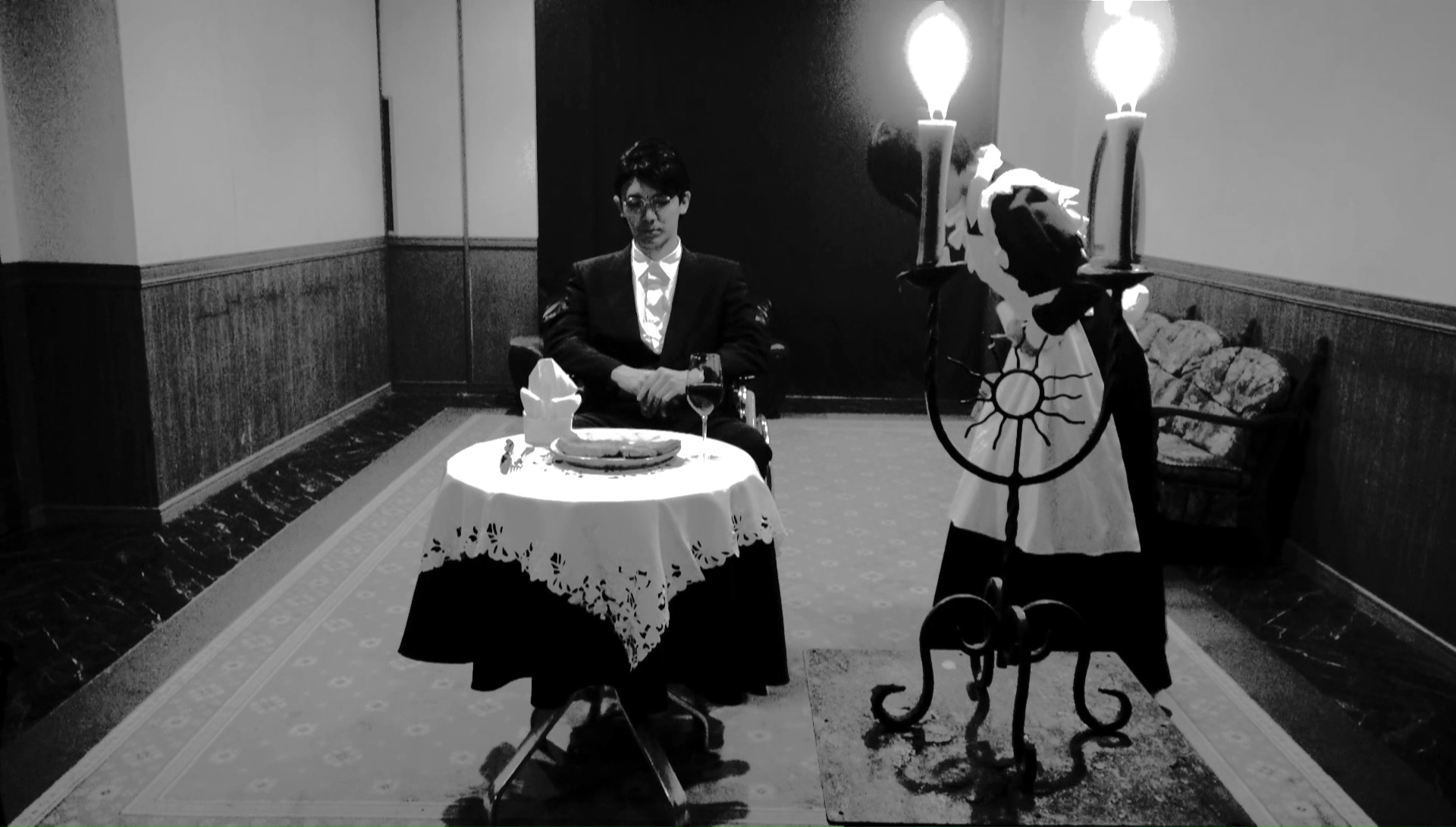
Mai-chan’s Daily Life (Mai-chan no nichijô) is a 2014 Japanese ero guro splatter horror written and directed by Sade Satô with additional writing from Waita Uziga. The film is based on the infamous ero guro manga of the same name, written and illustrated by Waita Uziga. Miyako starts a live-in maid job and quickly discovers that housecleaning is the least of her duties, as her employers use the maids in their twisted fantasies. Her co-worker Mai-chan, who can miraculously recover from any injury, becomes the focus of horrific, indulgent violence that Miyako is soon drawn into.
Unlike the traditional depiction of violence as terrifying and unsettling, this one presents it as indulgent and almost celebratory, making the experience feel profoundly uncomfortable. For anyone not familiar with Japanese ero guro art, its blend of extreme gore with a fetishistic tone can be disturbingly uncomfortable. The lack of moral boundaries, turning Mai’s suffering into a never-ending cycle of exploitation with no escape, amplifies its horrifically pessimistic sentiment of sadistic destruction. The graphic practical effects, combined with the film’s sleazy, underground aesthetic, make every act of brutality feel disturbingly intimate.
Grotesque (2009)
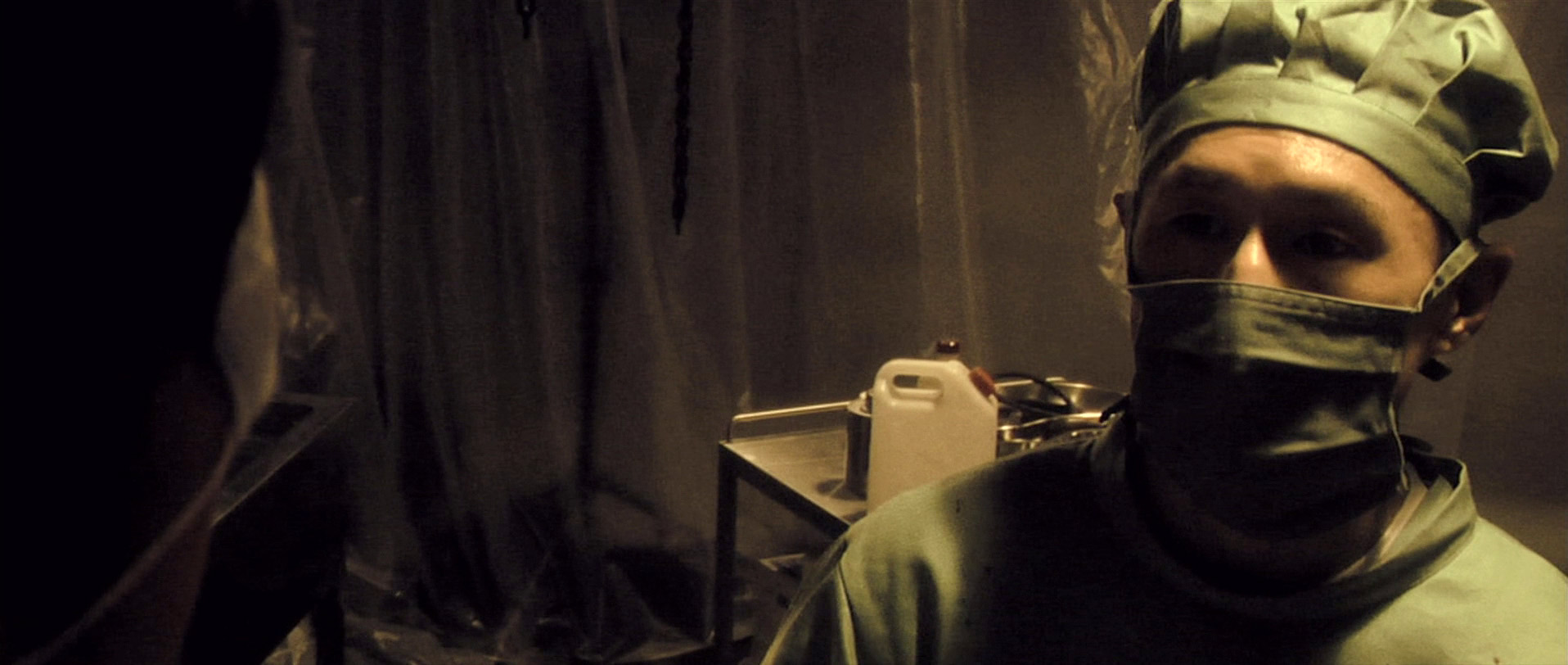
Grotesque (Gurotesuku) is a 2009 Japanese Splatter horror thriller written and directed by Koji Shiraishi. An unnamed doctor has always had everything he’s ever wanted, but that has only made him develop more extreme and depraved needs. He kidnaps a young couple in the prime of their life together and forces them into a game of torment that slowly extinguishes their hopes for survival
What makes Grotesque so disturbing is its sheer lack of purpose beyond suffering. Unlike other extreme horror films that incorporate social commentary or psychological depth, this one exists purely to showcase relentless, sadistic brutality. The victims are given no real backstory or chance of escape—their pain is the entire point, making the experience feel deeply nihilistic and unsettling.
The film’s cold, clinical cinematography, combined with its realistic practical effects, enhances its raw, snuff-like quality. There’s no moment of relief, no deeper meaning—just an unfiltered descent into human cruelty. It’s this extreme, unapologetic approach that led to Grotesque being banned in several countries and cemented its reputation as one of the most disturbing torture films ever made.
Concrete-Encased High School Girl Murder Case: Broken Seventeen-Year-Olds (1995)
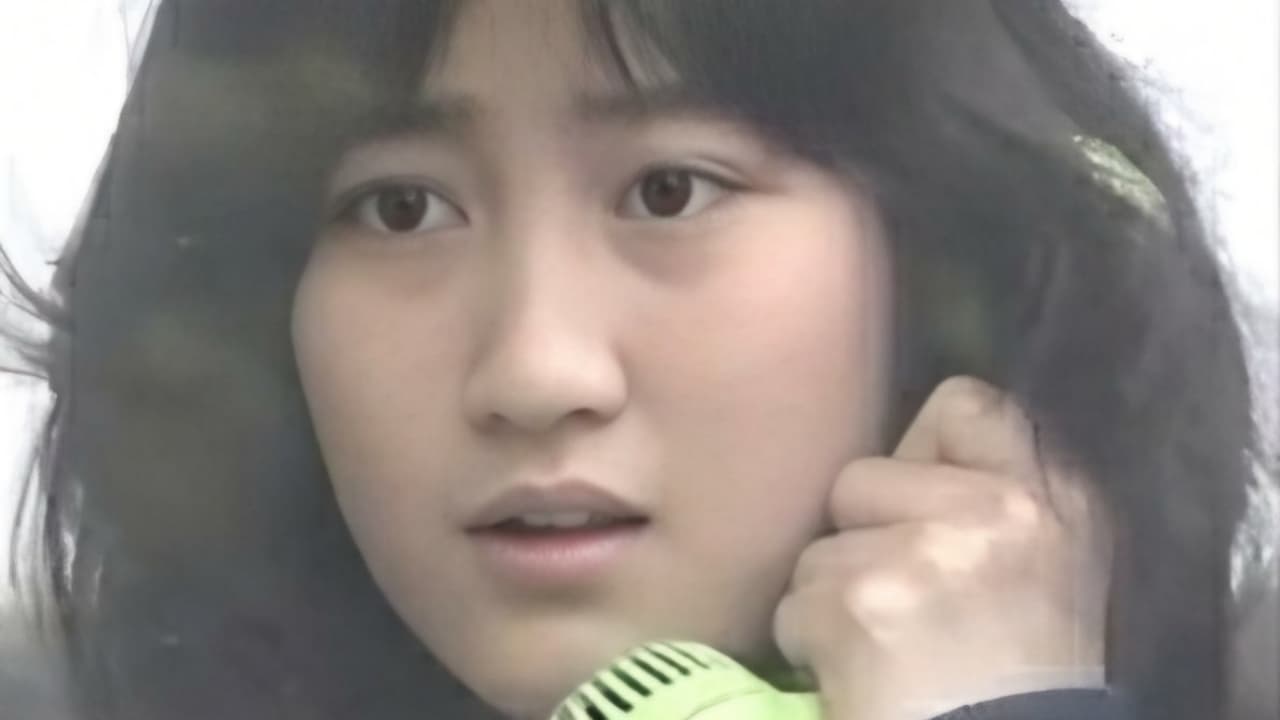
Concrete-Encased High School Girl Murder Case: Broken Seventeen-Year-Olds (Joshikôsei konkurîto-zume satsujin-jiken: Kowareta sebuntîn-tachi) is a 1995 Japanese exploitation horror written and directed by Katsuya Matsumura, with additional writing from Takafumi Ohta. Based on the infamous “Concrete-encased high school girl murder case” that took place from November 1988 to January 1989 in Japan. Junko Furuta, a female 17-year-old high school student, was kidnapped and confined in a house by four other male high school students (all juvenile) in the Ayase district of Adachi-ku, Tokyo, where she was repeatedly raped, sexually humiliated, and tortured in an extremely brutish manner for 41 days before she finally died after a particularly severe beating. The boys hid her body in a drum and filled it with concrete, but the body was nonetheless discovered a few months later
A bleak and oppressive atmosphere that offers no respite from the cruelty it depicts, Concrete-Encased High School Girl Murder Case: Broken Seventeen-Year-Olds presents itself as a reenactment of the cruel and sadistic violence suffered by Junko in her final moments. However, with its disturbing focus on the victim’s helplessness and the perpetrators’ callousness, the film is less like a traditional crime thriller and more a sensationalist piece of exploitation, capitalising on the unthinkable suffering suffered by another human being.
The film doesn’t hold back in framing the horrific torture inflicted upon the victim front and center. However, the film does so in a detached, almost voyeuristic manner, adding to the discomfort of the viewer. Encompassing the shared revelry between the group, along with the sadistic suffering of the victim shows little respect for the original victim and only exploits the unbearable terrors she had to endure.
More Lists
Shocktoberfest 2022 – My Personal Halloween Watch-List (Week 2)
Week Two Nineteenth-century American author Edgar Allan Poe was my introduction to horror. Literary scholars consider him to be a key foundational block of the genre and his works are…
11 Best Christmas Horror Films – Tree-mendous Scares Aplenty
It’s that time of year again when it’s dark at 2 pm and colourful lights and Christmas music assault the senses. But fear not, as we have a list of…
The Best of the Shake, Rattle and Roll Series (Part II)
Welcome to the second and final part of The Best of Shake, Rattle & Roll. In this list, we jotted down 15 of the scariest and most memorable Shake, Rattle…
Galentine’s Gorey Goodness: 13 Horror Films Exploring Friendship
Being a girl ain’t easy, especially for the heroines of horror movies. Luckily, having your best gal pals by your side can make it all a little easier, whether it’s…
Every Short Film From The AXWFF 2021 Alumni Showcase Reviewed
The Ax Wound Film Festival is a horror fest featuring works by female and non-binary filmmakers. In December 2021, with the help of the Future Of Film Is Female initiative,…
TADFF 2023 International Shorts Feature [Toronto After Dark Film Festival]
The international shorts on offer at this year’s Toronto After Dark Film Festival are among the strongest of the entire lineup. From a bizarre reunion with a lost family member…

Hey there, I’m Jim and I’m located in London, UK. I am a Writer and Managing Director here at Grimoire of Horror. A lifelong love of horror and writing has led me down this rabbit hole, allowing me to meet many amazing people and experience some truly original artwork. I specialise in world cinema, manga/graphic novels, and video games but will sometime traverse into the unknown in search of adventure.

